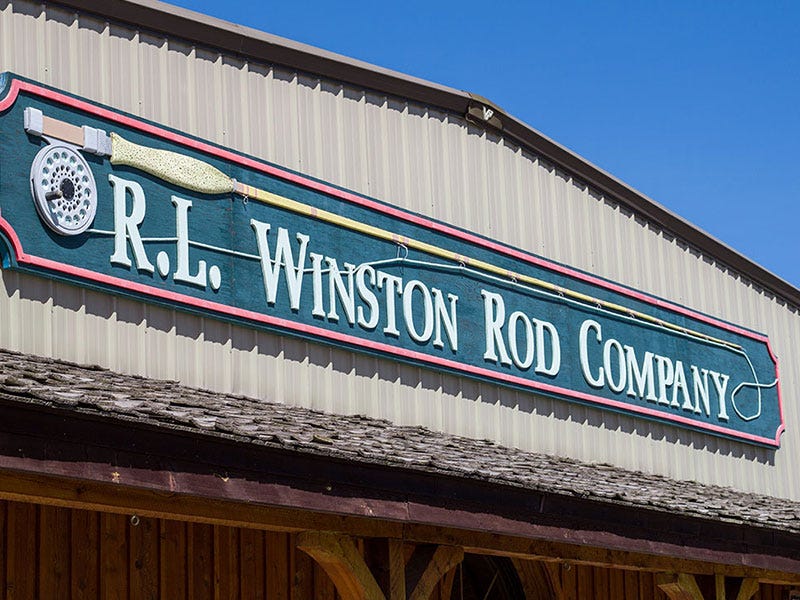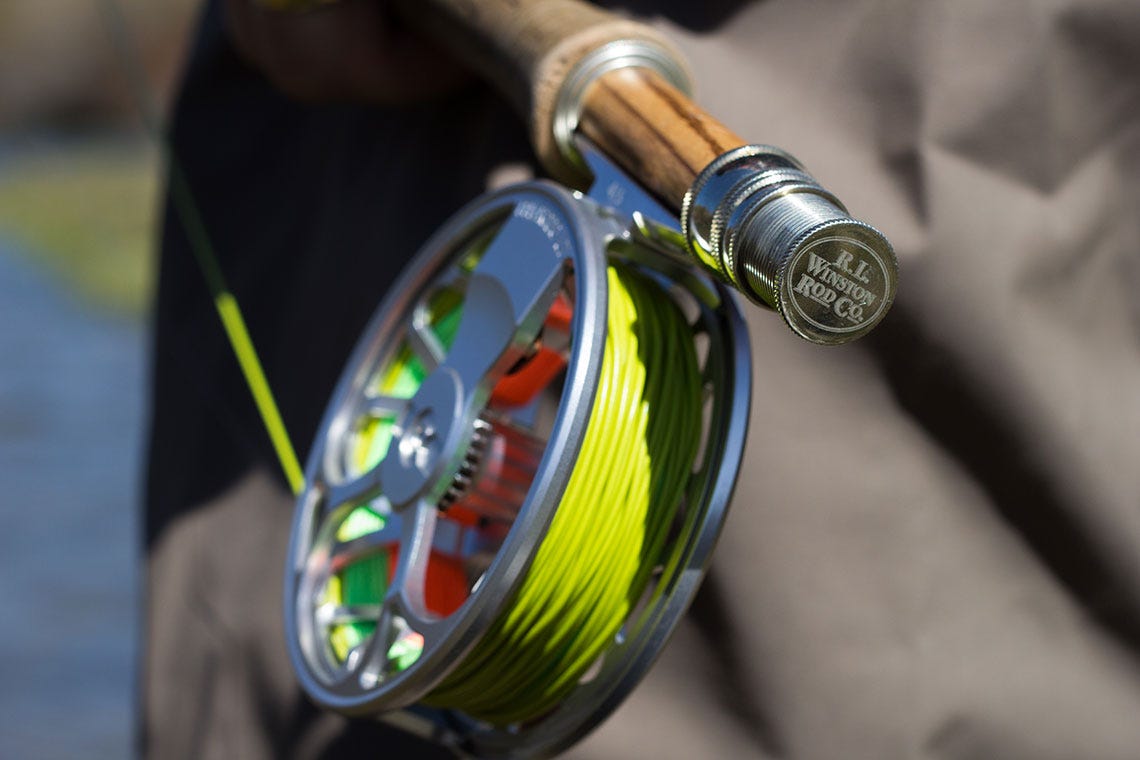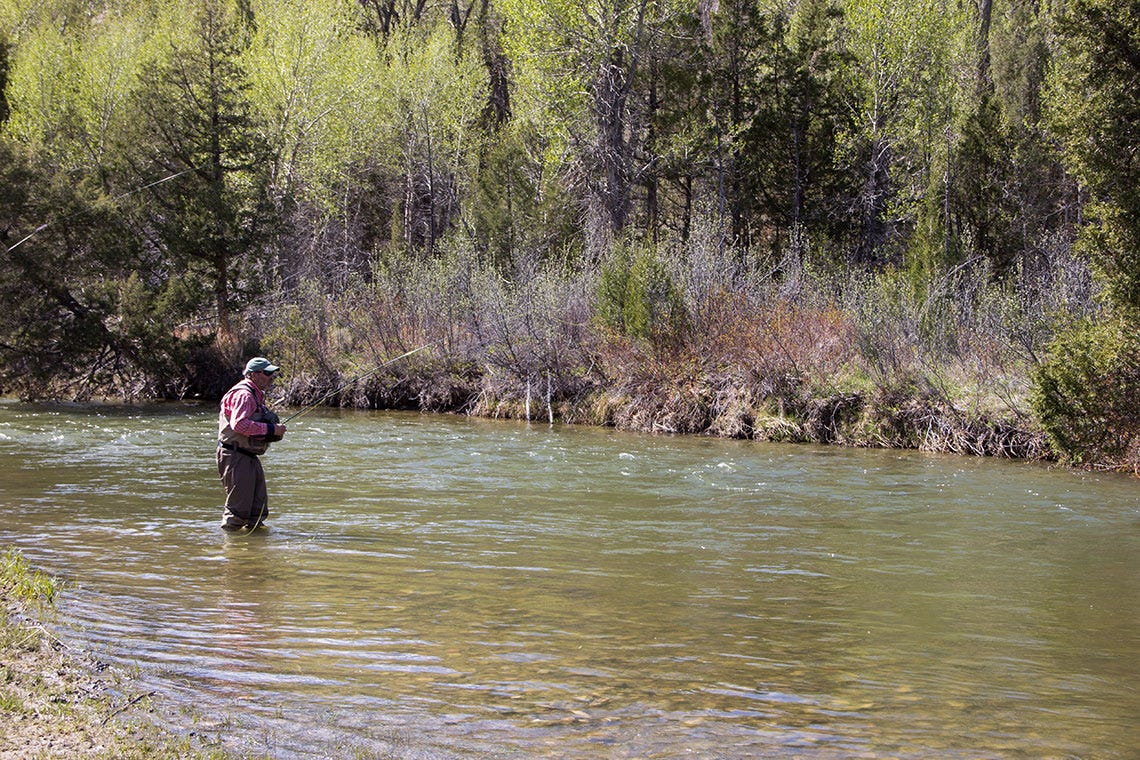Dedication: What Makes Winston Rods Great; Where are Winston Rods Made?

Where are Winston Rods Made? Montana, of course.
I have driven by the Winston factory in Twin Bridges, Montana, a hundred times, usually on the weekends and usually on my way to the Ruby, Jefferson, or the Big Hole, and I'm not really looking to stop anywhere. However, a week earlier, Winston's sales manager Jeff called and asked if we could attend a dealer event at the factory. So Fred, our Great Falls fly shop manager, and I made a 4:30 AM drive to Twin Bridges to attend.
I've never really taken the time to understand Winston rods. I've known they make really fine fly rods and pride themselves on quality. I knew they used boron. I knew they were green, and I knew they were made in Montana. I suppose that much should be just about enough. However, we got the real story and a behind-the-scenes look that most people never get to see. So, I’m going to share with you why you’ll want to own at least one Winston for your quiver.
Adam, our tour guide, started working at Winston six years ago. He told us one of the senior employees approached him one day as he was working in the rod shop to say, "Dude, you're not just here building fly rods, you're building a Winston." That pride and attitude echoes throughout the building. Employees are proud to wear Winston shirts, and hang grip and grins above their work spaces to remind themselves why they are here.
Winston Rods: Pre-preg Material Storage and Pattern Cutting Area

Downstairs and Deeper into the Winston Rod Factory
Next, we went downstairs to the area where the blanks are then rolled, taped, sanded and finally baked. Probably one of the biggest light bulbs that went on for me in this process was actually something one of the employees, John, said. They sand their blanks so that they can make sure when they put their proprietary green finish on the blanks, any imperfections can be noticed easily. I can tell you not all rod companies do this. If any employee at Winston finds an imperfection in a rod, they have absolute and immediate permission to break the blank over their knee and throw it away. Quality is a first priority, and imperfections are not tolerated, maybe almost to a fault.
After being baked, the rods are then pulled off the mandrels they were rolled onto and sent to get ferrules. I hadn't realized that ferrules needed to be made so exact to each blank. Winston makes rods with two types of ferrules. A sleeve over ferrule is the most common and transfers energy well. The other, more traditional ferrule is a spigot ferrule. A spigot ferrule is made to be a male end ferrule and fits inside the blanks and creates a continuous taper and a smooth action in the rod. However, they do wear over the lifetime of the rod.

Why Winston Is Famous for Their Finish Work
Winston is famous for their finish work. Their corks are nearly flawless and made with extremely fine Portuguese cork. Their finish coating room is laboratory-run by Barb who makes sure no mistakes are made. Their wraps are meticulously analyzed by head rod wrapper and supervisor Elaine, who has been wrapping rods for nearly 30 years. She still wraps her rods on the same rod wrapper she started with 30 years ago. If you want to use Winston's thread wrap color, too bad, it's made exclusively for them. Elaine now employs other people in the community to wrap rods, so if you can pass her quality control, you can work for Winston at home and wrap rods.
The Final Step in Making a Winston Fly Rod: Reel Seat and Rod Sock
The final step is to apply the reel seat and put them in a rod sock that perfectly lines up with the tube it ships in. What attention to detail! When we went back to the factory to get a few more pieces of detail to make sure we really understood the Winston story, we ran into Joe, the production manager. Joe was a little concerned that Jeff and the guys were burning the BBQ that they were getting ready for lunch. However, when I asked Joe what it was that he does here, his facial expression immediately changed to one of extreme pride and said, "I'm the Winston fly rod production manager. This is my house."
Later, Jeff took us to the Ruby River to cast rods and discuss more about the plans and future of the brand. In the parking lot, a cage fighter from Hardin, Montana and his girlfriend came up the path to the trucks after fishing. It was their 30th anniversary and they had a mix of spin rods and a fly rod. He had been trying to learn fly fishing, but was struggling to understand it, and he had stopped into one of the big box sporting goods stores to get flies before the trip. I saw the flies he had in his cup; this is why you don’t go to those store to get flies.

The Winston Goal: Provide More Value to their Customers
The two Winston representatives I was with, Brooks and Darin, sprung into action, asking him about his fighting career and at the same time explaining how a caddis hatch works. Darin and Brooks got him some flies, showed him how to tie them on correctly, and we pointed him to an access that wasn't full of fly shop employees. He was so grateful he offered us a pair of his practice nunchucks as a trade (I'm not making this up). That guy isn’t going to go buy a Winston today, but we may have just pointed a new angler in the right direction, and he was willing to give us his nunchucks because two guys from Winston Rods were willing to help him out. After my trip, and reflecting on the fishing, meeting employees, the opportunity to provide feedback, networking with many other Winston dealers, and many other valuable experiences, I realize that although it may not be fast, they are working on continuously improving some of the finest fly rods in the world.
How are they getting there? By making an effort to provide more value than they receive, a lesson we can all work towards.
Thank you to Winston Fly Rods and their staff for hosting Confluence 2016. I hope more people can understand the dedication you guys have to your craft, and to building the finest quality fly rods.

